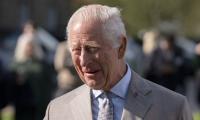In the East Room of the White House last Tuesday, President Obama broke down in tears when, bypassing Congress, he publicly announced executive orders on gun control seeking to expand background checks on firearms purchases.
Wiping tears from his face, the American president remembered the children killed in the 2012 Sandy Hook Elementary School shooting in which a 20-year-old fatally shot 20 children. “Every time I think about those kids, it gets me mad”, said he.
The Sandy Hook shooting was the second deadliest mass shooting in an educational institution in US history after the 2007 Virginia Tech shootings in which 32 people were killed. Obama’s tearful remembrance is therefore understandable; being a parent himself he can identify with the loss and grief of other parents.
Watching the usually composed Obama publicly displaying emotion reminded me of another president in another part of the world.
Back in December 2006, a teary-eyed Hamid Karzai lamented that Afghan children were being killed and maimed by Nato and US bombs. In a speech that brought audience to tears, Karzai said the brutality was “too much’’ and that Kabul was unable to “stop the coalition from killing our children”.
In March 2011, Karzai rejected apologies from Obama and Gen Petraeus for the killing of nine Afghan youngsters aged between 7 and 13; the children had been collecting firewood.
I was also reminded of a couple of other incidents that now lie buried under the ever-increasing debris of post-9/11 developments. In August 2008, a number of Afghan villagers angrily protested the deaths of 76 civilians, most of them children, killed in US-led airstrikes near Herat.
And again, on December 30, 2009, Afghan protesters in Jalalabad burnt a US flag and an effigy of President Obama, chanting ‘Death to Obama’ and ‘Stop killing us’. This was in response to the killing of ten villagers in their home by US-led forces during a raid in Kunar. The victims included eight children.
In an unconventional war it is difficult to keep track of casualties. Notably, while the death toll of US-led coalition troops is carefully tracked and updated on a daily basis, no such policy applies to civilian deaths during combat.
That said, there are some estimates available. According to an Iraq Body Count (IBC) report, between 2003 and 2012, 13 percent of all documented civilian deaths in Iraq were directly caused by the US-led coalition. Of the 45,779 victims, 3,911 (8.54 percent) were children under age 18.
A 97-page report by the Washington DC-based Physicians for Social Responsibility (PRS) was released in March 2015. This is the first study that tallies up the total number of civilian casualties from US-led interventions in Iraq, Afghanistan and Pakistan. It concludes that the civilian death toll in Iraq since 2003 to date is about one million.
It further adds that at least 220,000 in Afghanistan and 80,000 in Pakistan have been killed as the direct or indirect consequence of US-led war adding up to a “conservative” total of 1.3 million. The real figure could easily be “in excess of 2 million”. It is not difficult to infer that the gory list of civilian victims includes a substantial number of children.
A June 2015 UN report shows that in 2014 alone 24 children were killed in operations carried out by the US and its allies in Afghanistan. Airwars.org reports that in recent attacks an unknown number of children are included in the list of 1,550 civilians killed in US attacks in Iraq and Syria.
US drone strikes in Pakistan over the last decade have killed between 172 and 207 children according to the Bureau of Investigative Journalism. However, researchers believe that the record in Afghanistan and Pakistan of any US-caused civilian casualties and “most especially the killing of children” is incomplete. How many children have actually died is therefore anybody’s guess.
Of course, one must quote such figures with caution and one must not be unmindful of obvious caveats. The US after all is not solely responsible for post-9/11 violence, given intra-Muslim rivalries, domestic socio-economic and political issues and the quality of Muslim leadership.
Yet, as Stephen Walt has argued, the United States has a major responsibility because it has invaded countries that did not attack the US, and while doing so it “took hardly any precautions to prevent the (predictable) outbreak of violence.’’ Walt has further observed that virtually all of these deaths are “the direct or indirect consequence of official US government policy.’’
It goes without saying that three-year-old Syrian Aylan Kurdi, who drowned while fleeing from Syria, and many others like him are the indirect victims of America’s war on terror.
As political scientist Neta Crawford explains, children who continue to survive in war-zones face serious harm “due to the destruction of infrastructure which impairs delivery of medical care, makes drinking water unsafe, and makes food scarce.”
Add to this the uncertain future of children fleeing war-zones and living in refugee camps and the sorrow becomes too deep for tears.
Atrocities against children are committed by Isis, Boko Haram and other militant groups; close to home the APS massacre continues to break our hearts over and over again. These groups are correctly denounced by the US and its allies as brutal terrorists.
How does the US justify its own killing of children? Nothing in the world can convince a neutral observer that one is somehow more acceptable than the other. Terming their deaths as ‘collateral damage’ doesn’t quite add up.
So Mr Obama, while one can understand your grief over the sad deaths of innocent American children, the children of a superpower, one wonders if you could also spare a few tears for the children of a lesser god.
The writer is an academic , currently affiliated with Meliksah University, Turkey. Email: talatfarooq11@gmail.com
After November 30, it will be impossible for ordinary internet users to access all banned websites, including X
Muslims participated alongside their Hindu fellow villagers and other residents of area
For last eight years, HEC's budget has been virtually stagnant in absolute terms
Home to 14 million people, Lahore has always been celebrated as Pakistan’s historical, culinary, and cultural hub
Partnership between Pakistan and China in media and culture reflects shared commitment to strengthening bilateral...
This article focuses on single error committed by our respected judiciary which haunts me more than I would care to...







